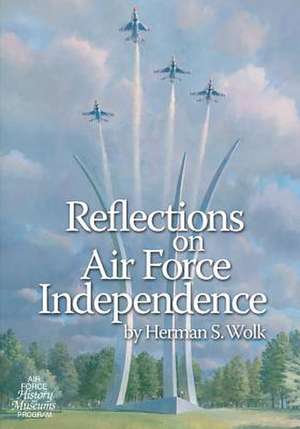Reflections on Air Force Independence
Autor Office of Air Force History, Us Air Forceen Limba Engleză Paperback
Preț: 109.94 lei
Nou
Puncte Express: 165
Preț estimativ în valută:
21.05€ • 21.65$ • 17.46£
21.05€ • 21.65$ • 17.46£
Carte disponibilă
Livrare economică 25 ianuarie-08 februarie
Preluare comenzi: 021 569.72.76
Specificații
ISBN-13: 9781508697466
ISBN-10: 1508697469
Pagini: 136
Dimensiuni: 178 x 254 x 7 mm
Greutate: 0.25 kg
Editura: CREATESPACE
ISBN-10: 1508697469
Pagini: 136
Dimensiuni: 178 x 254 x 7 mm
Greutate: 0.25 kg
Editura: CREATESPACE
